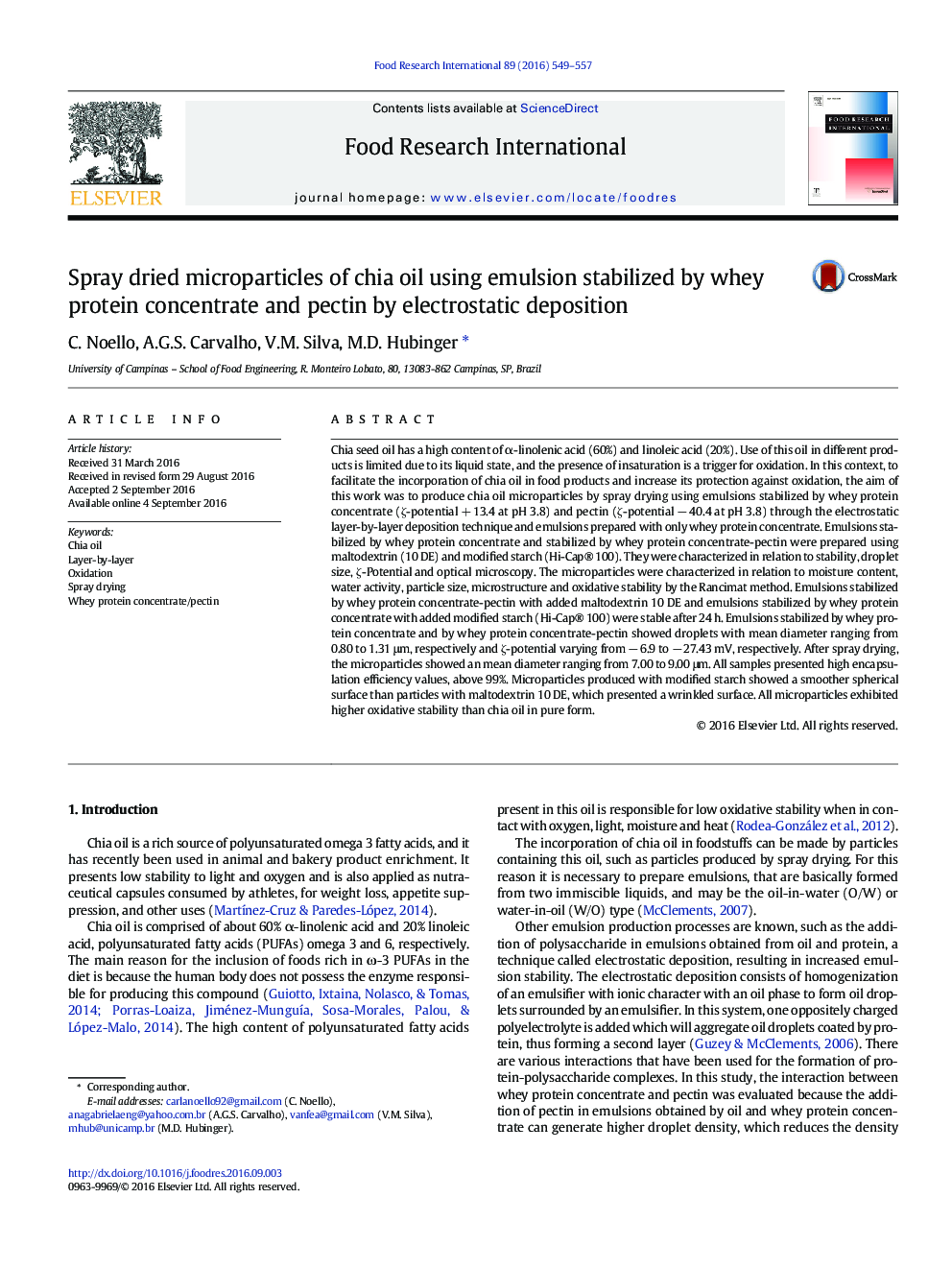| Article ID | Journal | Published Year | Pages | File Type |
|---|---|---|---|---|
| 6394850 | Food Research International | 2016 | 9 Pages |
â¢All emulsions were stable, at least, for 24 h after preparation.â¢Maltodextrin and Hi-Cap®100, additional wall material, was needed for spray drying.â¢Particles with high encapsulation efficiency and size under 10 μm were obtained.â¢The microparticles showed higher induction time than chia oil, by Rancimat method.
Chia seed oil has a high content of α-linolenic acid (60%) and linoleic acid (20%). Use of this oil in different products is limited due to its liquid state, and the presence of insaturation is a trigger for oxidation. In this context, to facilitate the incorporation of chia oil in food products and increase its protection against oxidation, the aim of this work was to produce chia oil microparticles by spray drying using emulsions stabilized by whey protein concentrate (ζ-potential + 13.4 at pH 3.8) and pectin (ζ-potential â 40.4 at pH 3.8) through the electrostatic layer-by-layer deposition technique and emulsions prepared with only whey protein concentrate. Emulsions stabilized by whey protein concentrate and stabilized by whey protein concentrate-pectin were prepared using maltodextrin (10 DE) and modified starch (Hi-Cap® 100). They were characterized in relation to stability, droplet size, ζ-Potential and optical microscopy. The microparticles were characterized in relation to moisture content, water activity, particle size, microstructure and oxidative stability by the Rancimat method. Emulsions stabilized by whey protein concentrate-pectin with added maltodextrin 10 DE and emulsions stabilized by whey protein concentrate with added modified starch (Hi-Cap® 100) were stable after 24 h. Emulsions stabilized by whey protein concentrate and by whey protein concentrate-pectin showed droplets with mean diameter ranging from 0.80 to 1.31 μm, respectively and ζ-potential varying from â 6.9 to â 27.43 mV, respectively. After spray drying, the microparticles showed an mean diameter ranging from 7.00 to 9.00 μm. All samples presented high encapsulation efficiency values, above 99%. Microparticles produced with modified starch showed a smoother spherical surface than particles with maltodextrin 10 DE, which presented a wrinkled surface. All microparticles exhibited higher oxidative stability than chia oil in pure form.
Graphical abstractDownload high-res image (68KB)Download full-size image
